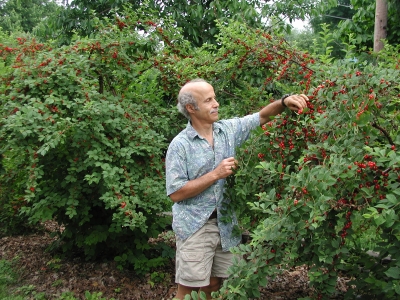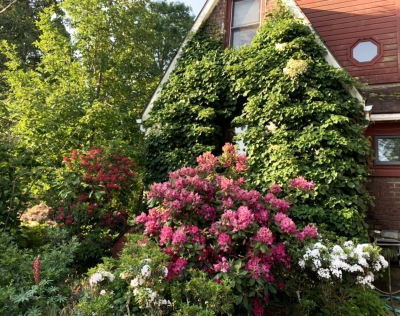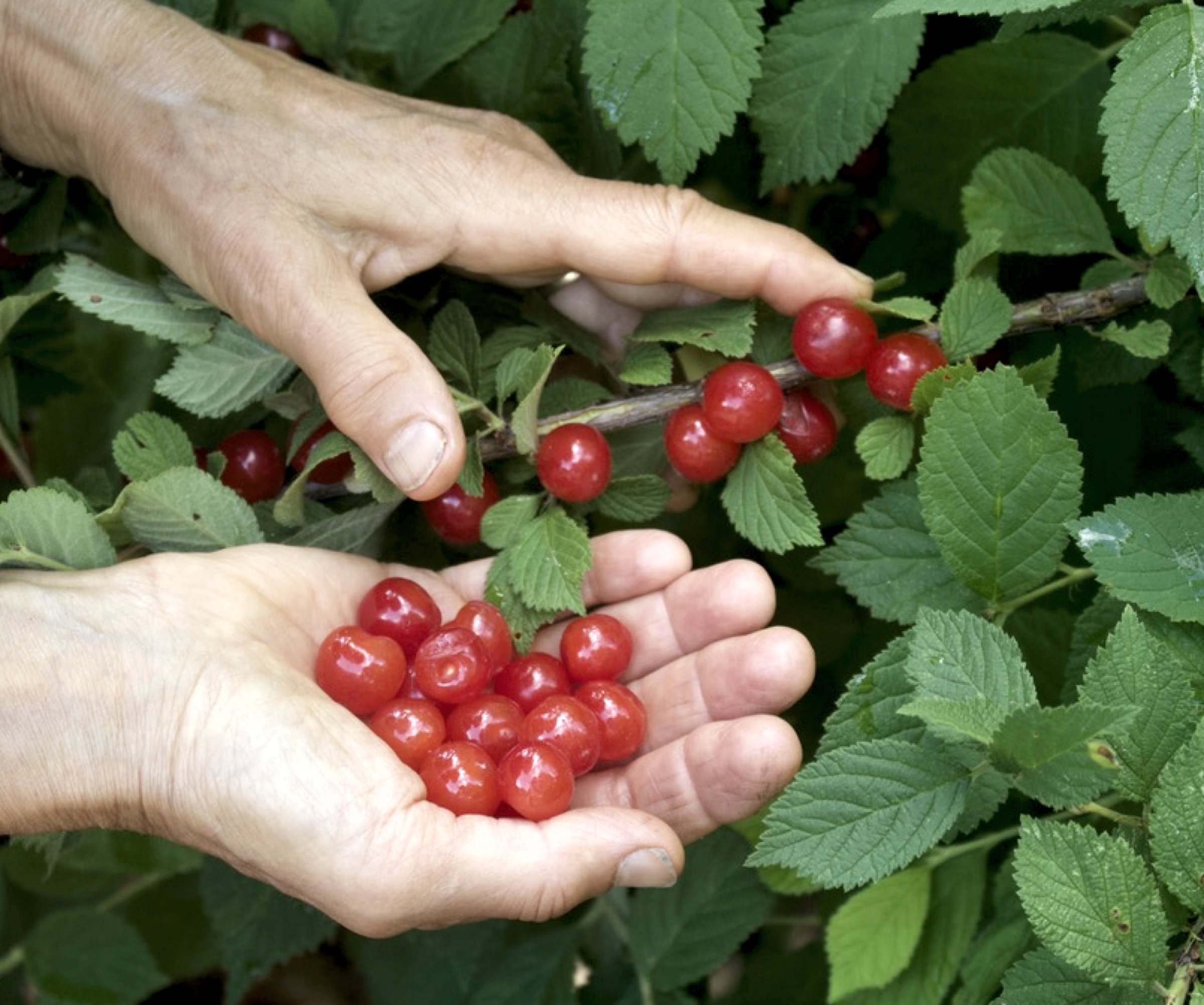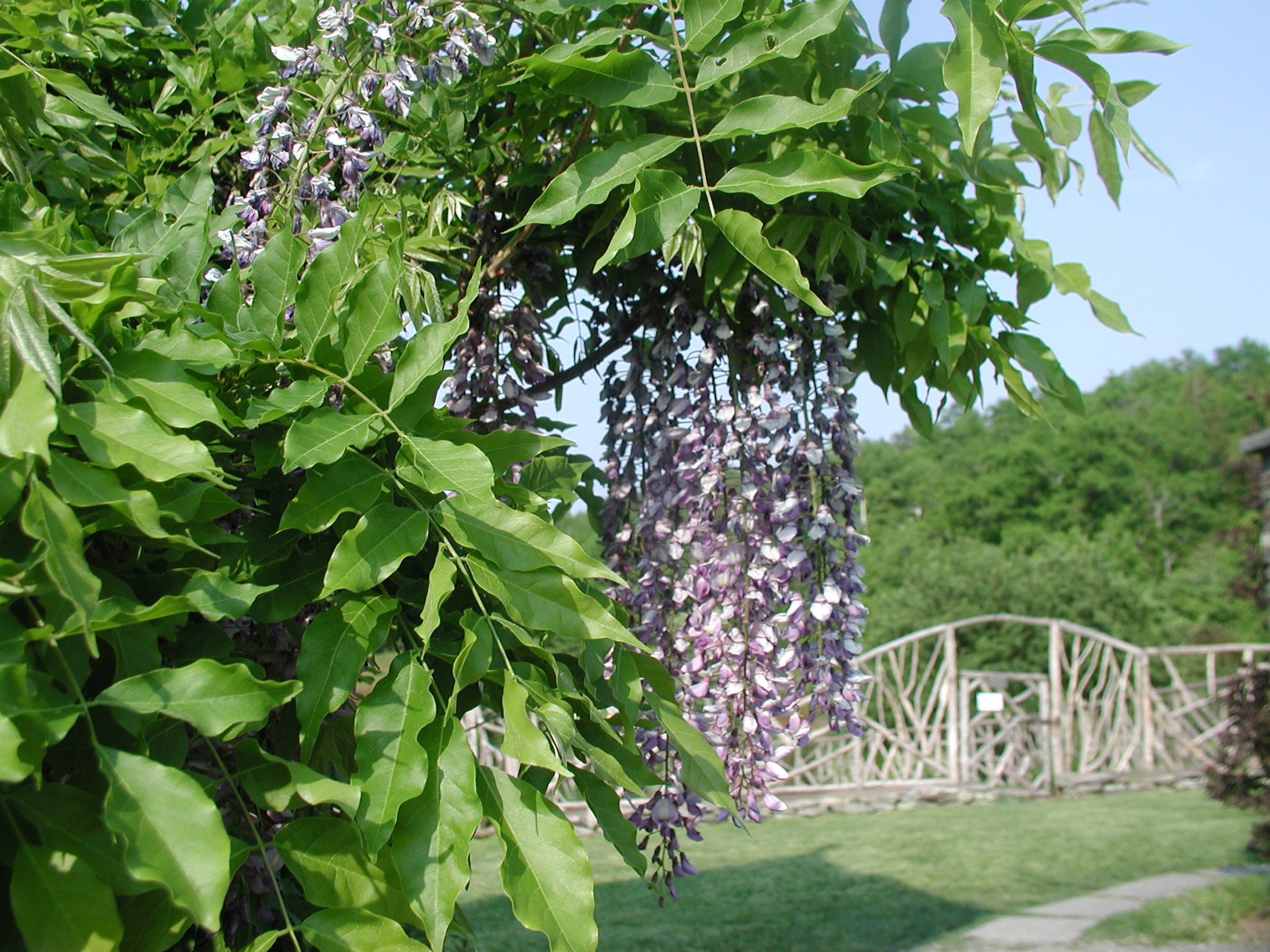EASY CHERRIES
/28 Comments/in Design, Flowers, Fruit/by Lee ReichSweet, Juicy, & Tolerant
Nanking cherries (Prunus tomentosa) are now at their peak of perfection, sweet and sprightly flavored, brilliant red in color, still firm, and, as usual, abundant. Nanking cherries are very juicy and not stingy to release the juice. Straight up, it’s the most refreshing juice imaginable.
You’ve never heard of Nanking cherries? Understandable since they are an uncommon fruit. (And warranted a whole chapter in my book Uncommon Fruits for Every Garden, now out of print but in the works for updating and expanding.) As the name tells you, they are native to China, more generally to the cold, semi-arid regions of Asia. This provenance tells you something about the toughness of the plant, where it weathers winter temperatures below minus 20 degrees F. and summer temperatures as high as 110 degrees F. Read more
WISTERIA UPS AND DOWNS
/14 Comments/in Design, Flowers/by Lee ReichShoots vs. Flowers
Around this time of year, few plants are as dramatically beautiful as a well-grown wisteria, whose chains of lavender flowers drip like little waterfalls from the branches. I’ve always wanted one, and now I have one.  But I’ll keep in mind a common complaint people have with wisteria: The frustration when a wisteria plant is all shoots and no flowers!
But I’ll keep in mind a common complaint people have with wisteria: The frustration when a wisteria plant is all shoots and no flowers!
This problem has some causes and some solutions. The common complaint can often be traced to something as simple as a poor plant or a poor site. Perhaps Read more
A SLIPPERY SLOPE
/0 Comments/in Design, Flowers/by Lee ReichA Little History
Walking down the path alongside my home first thing this morning, I looked to my right and was wowed. What I saw warranted bragging rights. Flowers in red, pink, white, and a touch of purple against a backdrop of varying shades of green leaves, some sparkling with reflected light, others mat, holding onto any reflections. Heart-shaped leaves, lance-shaped leaves, and compound leaves livened the backdrop. All of it set off against the solid backdrop of the red brick wall.
Although I chose and planted all that I admired, not too much credit for it was mine. This was no carefully planned design laid out on paper with squiggly shapes representing plants and their locations, each shape labeled with plant names and varieties, perhaps even a note to flower colors.
Twenty plus years ago, the site was a strip of sloping lawn on the east and north sides of my home. Imagining myself one day slipping while mowing with my foot sliding beneath the mower that birthed a plan for building a rock wall at the base of the slope which would be backfilled with soil. No more slope and no more mowing.
The Heath Family Stays Together for a Reason
And so was borne my “heath bed,” a bed of various plants in the Heath Family, Ericaceae. Grouping such plants together was not just a botanical plaything; it had function. Read more




